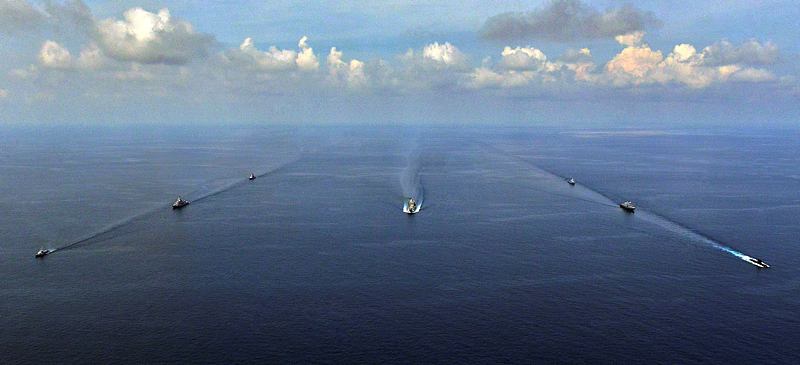There are other important dimensions to consider in a large complex project such as the Future Submarine Program (FSP) SEA 1000 besides the economic arguments that we so often read about.
As the Rand Corporation study concluded in its recent report into Australian naval shipbuilding, it’s desirable to start with a mature design and then make a few changes to the design baseline over the course of the construction program.
The ANZAC Frigate shipbuilding program is often cited as a successful program that delivered ten ships for Australia and New Zealand following these two precepts.
What’s fundamentally different for SEA 1000 is that there’s no mature design available that comes even close to meeting Australia’s requirements. We just have to manage the process as best we can to achieve a mature design baseline at the start of the construction program.
First we must ensure we have the relevant expertise by selecting an experienced overseas designer who’s associated with a well-regarded submarine design and construction program in their own country. The Competitive Evaluation Process (CEP), initiated in February, will achieve this goal.
Then we must follow a deliberate and comprehensive process to develop the design baseline to meet Navy’s operational requirements of performance and sustainability, within government-approved costs and delivery schedules.
Each of the customer requirements will undergo analysis to formulate conceptual designs, which must be verified and validated before committing to construction, even of the first-of-class. To achieve this the prime equipment and software systems must be integrated to demonstrate operational effectiveness and sustainability. That requires the construction of land-based test sites, and employment of other maritime test platforms and simulators.
Finally we should work to maximise Australian involvement of all kinds to deliver greatest benefits from the program. This ranges from government and academic scientific and technology input, through engineering design to industrial construction and sustainment.
I attended the Sydney day in the SEA 1000 Industry Briefing tour last month and was greatly reassured to hear from departing Defence Material Organisation (DMO) General Manager Submarines, David Gould, about the design process to be undertaken by Defence and international design partners.
The design process will comprise three classical stages of concept design, preliminary design and finally detailed design—when the actual construction drawings and lists of material are completed.
Running through the first two of these stages will be refinement and analyses of requirements for operational capabilities and for sustainment goals including cost of ownership. Those stages will include research and development of new materials, processes, systems integration approaches and proof of maintainability amongst other matters.
There have been relevant lessons learned from past Australian and international submarine and shipbuilding programs. Thus far there is every sign that these lessons have been acknowledged and are being applied.
However the primary issue isn’t about where the submarines will be built. That will follow on from all the earlier activity as I have outlined above, and will be constrained by the level of knowledge and expertise that we have assembled and developed here in Australia.
We should maximise Australian involvement from the very start—and in all aspects of the design and development as well as construction and sustainment—in order to learn on the job and determine what we need to sustain a submarine building industry.
One major consideration will be the transfer of technology to Australia to be used ultimately for sustainment, comprising maintenance, modification and modernisation. We should advance this as early as practicable to order to maximise Australian industry involvement.
The three contenders in the CEP have been asked to offer three options: an all-Australian build, a hybrid build with the first boats built offshore and a completely foreign build. The hybrid build is the most practical solution to avoid the delays and other risks inherent in the all-Australian build arising from the lead time to get the program up and running with a skilled workforce; and the initial lack of experience in working with the designer
One can easily foresee the first-of-class being built offshore, with some Australian content and then at some point in the first batch of submarines the final assembly moving to South Australia, perhaps with some modules constructed in the source country.
I discussed these issues with the representative of Mitsubishi Heavy Industries (MHI) which has been contracted by the Japanese government to act for them in the CEP. Japan has undertaken technology transfers in the past in large-scale complex engineering fields such as mining and construction and there is a recognition it can readily be done again for SEA 1000
DCNS and TKMS have already stated publicly that this approach is feasible which adds weight to a transitional program in which the latter submarines are built here. The remaining question is how best to plan this to meet performance, cost of ownership and delivery schedule requirements while at the same time maximising Australian involvement.


